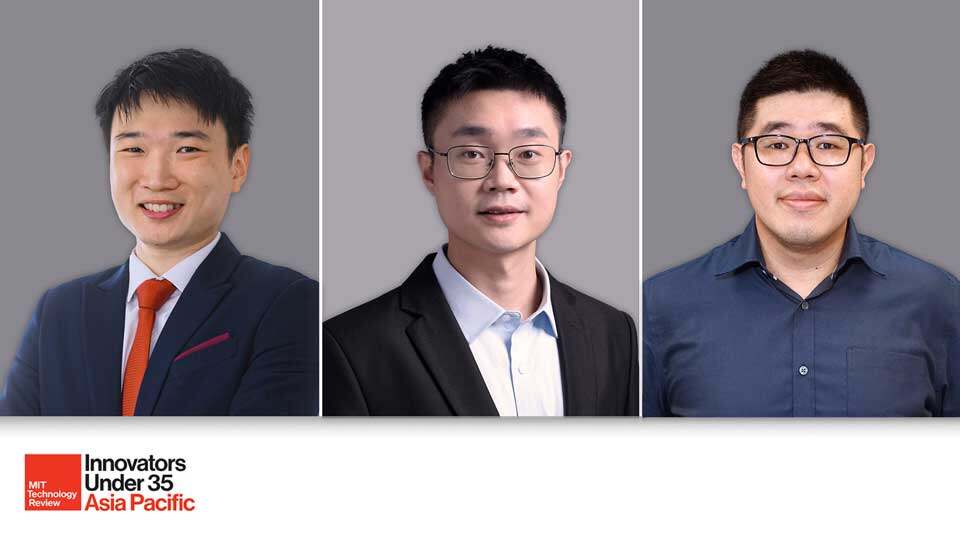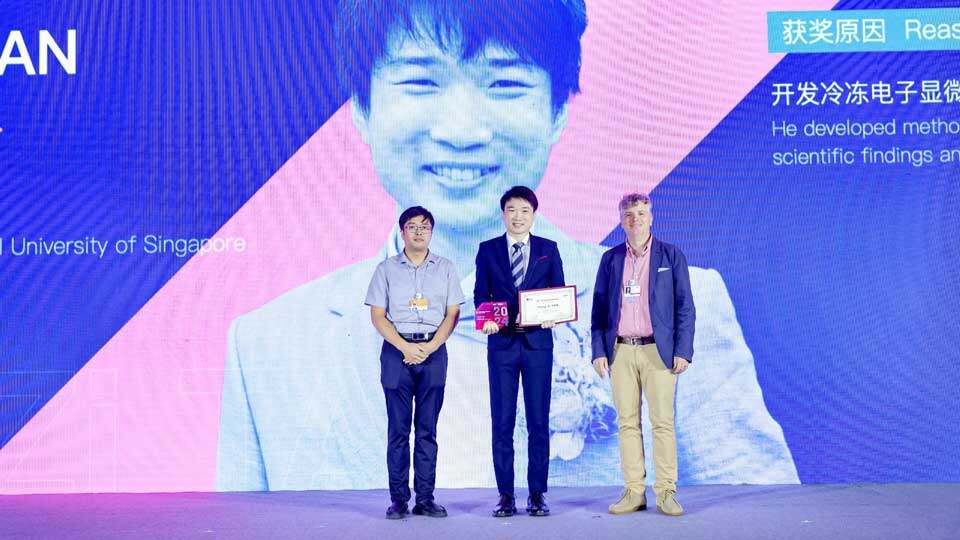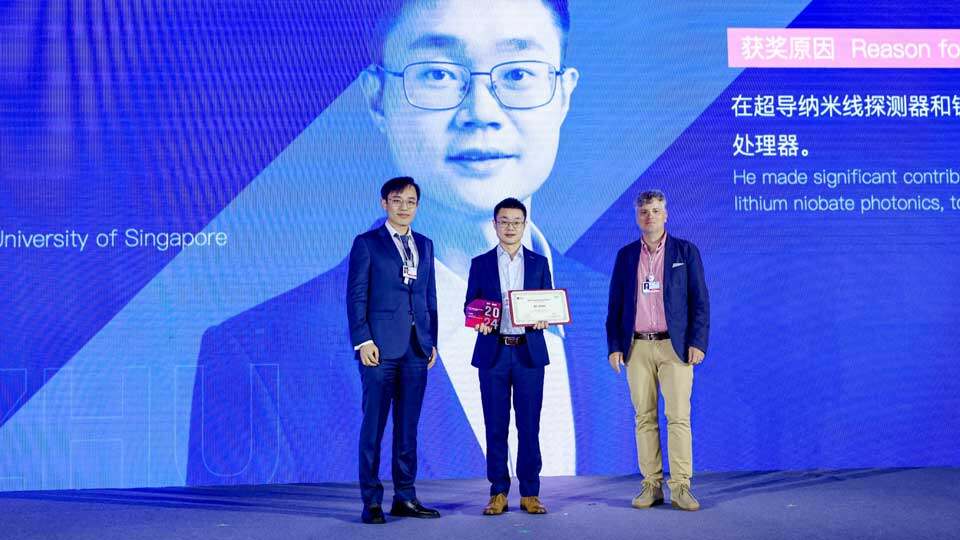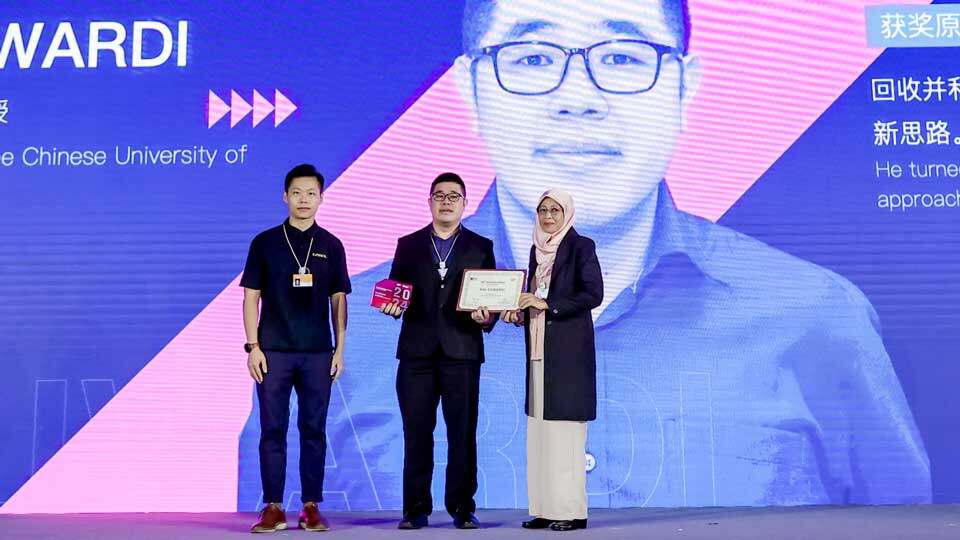

Three NUS researchers have been commended on the 2024 edition of the MIT Technology Review Innovators Under 35 (TR35) Asia Pacific list in recognition of their remarkable accomplishments and contributions to the progress of science and technology.
The 35 honourees were introduced and conferred their awards at the Meet TR35 Summit 2024 during the 17th Pujiang Innovation Forum held on 9 September 2024. The TR35 Asia Pacific list recognises these young science and technology trailblazers who have shown exceptional innovation and entrepreneurial acuity, and whose discoveries are expected to have profound impact in their respective fields.
These luminaries were honoured under five categories: Inventors who develop new technologies and startups; Pioneers who advance fundamental research; Entrepreneurs who launch tech ventures; Humanitarians who use technology to enhance opportunities or advocate policies; and Visionaries who discover new applications for existing technologies.


Assistant Professor Tan Yong Zi: Pushing the boundaries of protein structure imaging for potential drug targets
Cryo-electron microscopy (cryo-EM) is a remarkable tool that allows scientists to view the intricate landscape of the microscopic world. It provides detailed 3D images of the molecular components of the cell, such as its DNA, RNA, and proteins. Capturing these snapshots can reveal key information about how these components interact and function in different diseases.
Using innovative cryo-EM methods, Assistant Professor Tan Yong Zi and his team from the Department of Biological Sciences under the NUS Faculty of Science constructed and revealed the protein atomic structure models that are the key to understanding the evolution of organisms, how diseases spread, and how to design targeted drugs against these diseases.
Asst Prof Tan earned a spot on this year’s TR35 Asia Pacific list as an Inventor for his cutting-edge discoveries that helped to refine cryo-EM methods for protein structure analysis.
Asst Prof Tan and his collaborators pioneered the tilted data collection strategy to capture more views of protein samples with preferred orientation problems. This strategy allowed him to solve the structures of 14 different bacterial ribosomal intermediates that can be targeted for antibiotic development. To diagnose the degree of preferred orientation present in a protein sample, Asst Prof Tan and his collaborators also developed a software, called 3DFSC, which is now an online web server widely used by structural biologists around the world.
Asst Prof Tan co-developed Back-it-up, a novel open-source cryo-EM grid freezing device that can be built at a fraction of the cost of conventional freezing device and is able to do time-resolved cryo-EM experiments. He and his collaborators also demonstrated that applying a mathematical correction called the Ewald diffraction sphere curvature correction was crucial for achieving high resolution in cryo-EM images of an adenovirus capsid sample.
“I am deeply honoured to receive this award, and I would like to acknowledge the continual support from my lab members, collaborators, mentors and NUS that has made this possible. I am also heartened to see that methods development is being recognised as an important pillar for advancing scientific progress,” said Asst Prof Tan.


Assistant Professor Zhu Di: Innovating the future of scalable quantum computing
Quantum information processing exploits the laws of quantum physics and can potentially revolutionise modern society by solving complex problems in areas such as cybersecurity and drug discovery. However, building practical-scale quantum systems to solve real-world problems still faces formidable challenges.
Asst Prof Zhu Di, who holds appointments in both the Department of Materials Science and Engineering under the College of Design and Engineering as well as the Centre for Quantum Technologies at NUS, is dedicated to developing scalable hardware for photonic quantum information processing. He was recognised on this year’s TR35 Asia Pacific list as an Inventor for his important contributions in two technical platforms, superconducting nanowire detectors and lithium niobate photonics, to promote the construction of practical-scale quantum processors.
The advancements made by Asst Prof Zhu and his team have significantly expanded the functions and performance of these two technical platforms which have a direct impact on a wide range of photon applications in quantum processing.
Asst Prof Zhu plans to lead his team to continue developing new integrated photonic devices and collaborate with chip manufacturing platforms to explore new material systems and achieve wafer-level fabrication of quantum photonic integrated circuits.
Asst Prof Zhu said, “I’m honoured to be named on the MIT TR35 Asia Pacific list and would like to thank my mentors, collaborators, and team members who have made this possible. My team and I will continue developing innovative solutions to address critical challenges in quantum technologies.”


Adjunct Assistant Professor Ady Suwardi: Revolutionising thermoelectric technology for sustainable and renewable energy sources
Finding alternative energy sources and reducing energy consumption have become top priorities for many countries globally, owing to the negative environmental impacts of traditional energy sources, such as fossil fuels and oil. Thermoelectric technologies, a culmination of efficient, clean and sustainable methods to achieve renewable energy from heat, have garnered growing attention from the scientific community.
Working at the forefront to improve the performance of thermoelectric materials is Adjunct Assistant Professor Ady Suwardi from the Department of Materials Science and Engineering under the College of Design and Engineering at NUS. He has achieved a spot on this year’s TR35 Asia Pacific list as a Visionary for his research focusing on discovering ways to recycle discarded electronic products and devices, such as solar panels, into useful thermoelectric materials and devices to harness heat to produce electricity.
Adj Asst Prof Suwardi and his team proposed an innovative method to convert recycled non-purified silicon solar cells into valuable thermoelectric materials. By introducing phosphorus and germanium doping, they achieved materials with high thermoelectric performance. This breakthrough facilitates the development of sustainable thermoelectric devices as a source of renewable energy.
Adj Asst Prof Suwardi also holds a position as Assistant Professor in the Department of Electronic Engineering at the Chinese University of Hong Kong.
Adj Asst Prof Suwardi said, “Being commended on the TR35 Asia Pacific list has provided me a platform to spread awareness on the potential of thermoelectric technology and exchange ideas with peers across the region. I am very honoured and fortunate to be among the 35 young innovators recognised in this year’s list, and I look forward to contributing more impactful works in the years to come.”






































